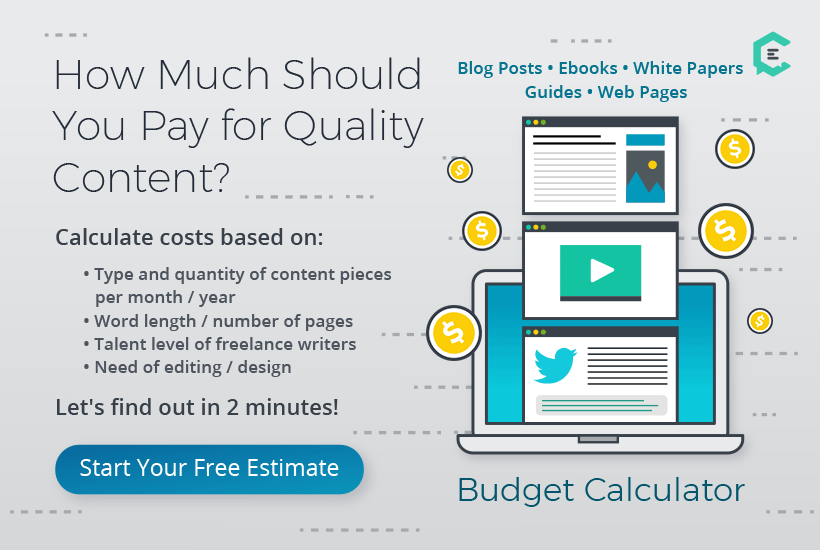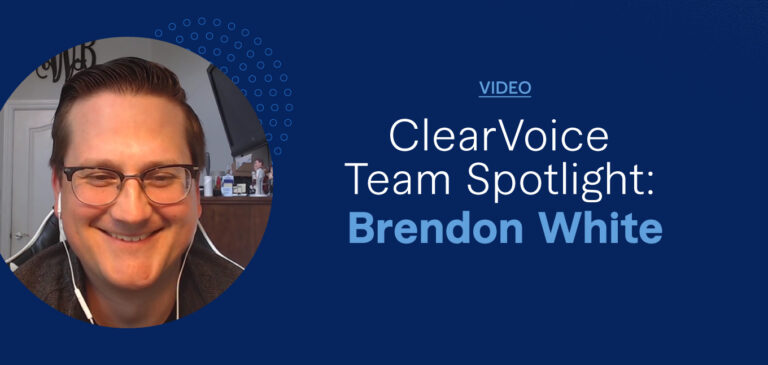A content level refers to the level of content in a brand hierarchy. Higher levels are more rooted in your core brand experience, while lower levels support them in terms of strategy, branding, or function. You can use content levels to better understand the interconnectedness of the branded content you create for your business.
If you want to elevate your strategic thinking, you might benefit from seeing your content as it fits into the bigger picture.
By zooming out and analyzing the structural hierarchy of how your content all connects together in support of your brand experience, you can sharpen your content strategy with eagle-eye awareness. We created a paradigm to help your fingers type with deliberation, not just random impulses, and to reboot your content approach.
Content level paradigm
In our paradigm, each level of your brand’s content is supported by content in the levels beneath it, with the higher levels being more rooted in your core brand experience than the lower levels.
11 levels of brand content
Using content levels is just one way to organize the structural abstracts of your brand content. Your content might not have all levels, or perhaps your brand might have additional levels. In general, the use of content flows up from lower levels to higher levels. Nonetheless, view this approach as a mental exercise to apply to your own content.
The 11 levels of content in your brand experience
1. Core
At a minimum, core content is content essential to your business offerings. Without it your brand wouldn’t exist — and you’d be unable to generate awareness or revenue. Core content often includes your website, key product and services pages, functional messaging and automation, as well as your brand’s mission and vision.
You define your core content.
Please note that the definition of core content is subjective. Always clarify what it means to your brand when communicating with content strategists and creators. For instance, if you opted to only have a brand presence on Facebook, your Facebook page and feed would be your core content. Or, if you’re like many marketers and publishers, you might casually refer to “core content” in the generic sense, meaning any content that is essential to a strategy, campaign or project. Context matters.
2. Vertical
Verticals are major categories or broad themes of content toward the top of your content taxonomy. Think of the Yellow Pages, for instance. Within the directory you’ll find major business categories, such as Restaurants, Health, and Home Services. You could consider each of these top categories as verticals because each has dozens of sub-categories under their larger umbrella in the taxonomy (e.g., dozens of cuisine types under Restaurants).
Or, you can go even broader. Perhaps “Food” would be a vertical in this Yellow Pages example and would include categories such as Restaurants, Groceries, Caterers, Farmers Markets, Wholesale Food Suppliers, et al. under it. How you adjust the scale of content to your definition counts.
Verticals also can be channels.
Sometimes you might hear marketers refer to verticals as “channels” as well, which are analogous to channels or stations on television and radio — not to be confused with distribution channels (e.g., social, search, paid media). For example, you might hear “channels” used in the context of divisions of content at major media organizations. Popular channels on news sites might include Entertainment, Local, Politics, and Weather.
3. Hub
Content hubs are organized collections of content. They can be as simple as navigable guides or blogs (such as the ClearVoice Blog) or as sophisticated as aggregates of multiple content types, links and feeds.
By definition, even your social channels are content hubs, or at least you should think of them that way. Large hubs also could be verticals on their own (but not necessarily, as a vertical could comprise multiple content hubs as well).
One of the most popular applications of content hubs in marketing includes resource centers, like this in-depth QuickBooks Resource Center by Intuit for helping people grow their businesses.

4. Franchise
Franchises are media produced on a recurring basis within a particular theme or story, or by a particular author/creator. They can range from newsletters and recurring columns to full-on entertainment franchises, like Harry Potter or the Marvel Universe.
Franchises are like never-ending campaigns.
In terms of content strategy, franchises focus on building audiences over a longer period of time and often include their own branding and style. They can feed into content hubs or promote them and other content levels. You also can think of franchises as never-ending campaigns — thus the reason why franchises sit above campaigns in the brand hierarchy.
5. Campaign
Campaigns are themed content initiatives tied to specific goals/KPIs and limited to predetermined time periods (or “flight times”). They can range from simple, themed series of posts on your social media to complex national advertisements, or even in-person events. (Yes, an in-person event or presence at a conference should be treated like a campaign.) Campaigns also can take on the feel of franchises, with multiple campaigns that build upon one another in a progressive series.
Although campaigns can relate to other levels of content, they often elevate the branding and messaging of content involved. Campaigns usually promote brand assets specifically created for the campaign level — or for Clio Award consideration (or other industry honors) — and often live outside of your core brand experience, but not always.
Promos are also campaigns.
You also should consider promotions within your core branded experience as campaigns, no matter how small they may seem. For instance, if you have rotating hero images on your website’s home page that you update periodically, those are promos — and by definition constitute campaigns. With this nuance in mind, it’s often common to call the campaign level the “promo level.”
For examples of effective approaches to major campaigns, see our post on socially responsible campaigns.
6. Pillar
Content pillars are bundles of content pages (or assets) supporting a specific theme or topic. Synonymous terms often include topic clusters, spokes-and-wheels, pillar pages, pillar posts, content bundles, or content series.
In a content pillar one top page (or asset) covers a broader topic (e.g., “Buying Your First Home”) while sub-pages that link to the top page (or asset) cover more specific supporting topics (e.g., “How Much House Can You Afford?”, “How Much Are Closing Costs?”, “How Much You Can Save: 15-Year vs. 30-Year Mortgages”). In terms of content strategy, pillars are effective for link-building and improving search engine optimization around a set of key search terms.
Pillars and hubs differ in scale.
Although content pillars and content hubs are similar, here’s a main distinction: A content hub can include multiple pillars, while a pillar is specific to a topic, not a broad category of topics that a hub might include.
Again, similar to core content, many marketers often refer to any important theme or category of content for their brand as “pillar content” in the generic sense. Be mindful not to confuse the different contexts.
7. Ladder
Content ladders are long-form content pages (or assets) that are intended to be updated frequently. They often might grow or change in length from their first published version, and can reach lengths of 3,000 words or more. Ladders are meant to evolve over time.
Unlike on pillars or on skyscrapers, content on a ladder can pop on and drop off in short order. No one individual content section is vital to the ladder’s success, as it’s the collective aggregate of content sections that adds value.
In the ClearVoice blog, we employ several ladders that are top posts, including our comprehensive calendar of top marketing conferences that we update after each conference. Although the theme of conferences stays the same, the exact number of featured conferences can change with each update.
You also can think of ladders as skyscrapers that are always under construction, and that’s why they sit above skyscrapers in the brand hierarchy.
8. Skyscraper
Skyscrapers are long-form content pages (or assets), often 1,500 words or more in length (similar to this one), that are used for link-building on particular topics. The term “skyscraper” refers to the “skyscraping height” of long content that requires significant vertical scrolling. Skyscrapers can be pages within a content pillar or a hub, but not necessarily. They also can be core content pages of your website. Unlike content ladders, however, the content on a skyscraper should be evergreen in nature, with only periodic updates.
From a strategic perspective, skyscrapers can target a key search term by using in-depth, high-quality content as an asset for link-building. To maximize content in the skyscraper level, attempt to make your skyscrapers the best they can be on particular topics. Use them in outreach to other outlets to link to your site instead of similar pages by your competitors.
Higher skyscrapers can encourage higher search rankings.
Because Google values in-depth quality content, skyscrapers can be SEO stars. For more strategic insights related to skyscrapers, please read my study we shared with our colleagues at Conductor on blog post length and the 20/20 rule for content freshness.
Original data studies and analysis are excellent candidates for skyscrapers, like our study and post How Much Should I Pay a Freelance Writer?, complete with a detailed infographic, or the most comprehensive post you’ll find on the web about creating a successful blog.
9. Foundational
Foundational content can cover any content you create or solicit (e.g., user-generated) for your branded experiences that supports the higher levels of content and strategy.
Think of foundational content as the base upon which you build larger themes and content experiences. Examples might include blog posts for a pillar or newsletter, product descriptions or listings for a vertical, infographics for a hub, reviews for directory listings, et al.
Foundational content can require the largest scale.
Although it might be counterintuitive as a lower content level, your foundational content could represent the highest quantity of content pieces you need to create to fulfill your content strategy. For example, we have more than 60 foundational blog posts that support our Freelance Writing Business Guide.
10. Asset
Assets are valuable, distinct pieces of branded content that can be used for multiple purposes or strategies. They can range from infographics and branded templates to standalone brand experiences and promotional items for distribution. Assets can include a wide variety of content types: ebooks, videos, presentations, podcasts, reports, collateral, boilerplates, executive bios, podcasts, webinar recordings, original photos, ads, swag, merch, et al.
Assets often contribute to and support your foundational content. For instance, assets can be the centerpieces you talk about or refer to in your foundational content. For this reason, assets sit at a content level below foundational content in the brand hierarchy.
You also can think of assets as plug-ins or add-ons. They can support or be a part of all the other levels of content, and especially act as the anchors to wrap campaigns around.
Remember that assets have value or earn value.
Marketers often use the term “asset” in a generic sense, referring to any individual piece of content. So please clarify for the sake of your paradigm. If you want to put a point on it, remember that assets in truth are things of value or that earn value. Assets can earn credibility, awareness, traffic, retention, or revenue.
For an example of a great asset, please read our Google Slides presentation of our original study: 2019 Survey Results: What’s Your Biggest Challenge With Content?
11. Element
Elements are similar to assets but they cannot stand on their own. Elements are building blocks that are used in the creation of higher levels of content. Examples include graphics, photos, widgets, forms, frames, code, non-branded templates (e.g., in Adobe, Microsoft Office, or other software), raw data, fonts, palettes et al.
What’s the difference between an element and an asset?
As asset can live outside of your website or core branded experience and still convey brand messaging or vision. An element is a piece of content that conveys no brand message or vision on its own. For instance, an infographic can be an asset, while images or graphs within the infographic could just be elements.
You promote assets, not elements.
Again, most people might call any piece of content an “asset.” Of course, it’s no surprise with the prevalence of digital asset management platforms (DAMs). “Digital element platform” just doesn’t have the same ring, does it? But please remember that an asset has perceived value on its own. The easiest distinction to remember: You promote assets, not elements.

FAQs about the content level paradigm
Do content levels equate with content value?
No…. Because all the content you create should have value. The paradigm is based on a hierarchy of structural support and connectedness, not value. The use of content flows up from lower levels to higher levels.
Are there other content levels?
Hypothetically, yes. My paradigm addresses the most common levels of content, but there could be additional levels that apply to your brand. Please note that a content level is not a strategy, it’s a degree of connectedness to your brand experience.
What about content outside of your brand experience?
If there was an addendum to the paradigm, “satellite” would be added as the twelfth level. However, I left it off because, unlike content in other levels, you do not create or necessarily solicit satellite content.
That being noted, satellite content is content that does not live in your brand experience. You might have some control over satellite content, but not much. For instance, although you might create meta descriptions for pages, Google might not present them in search engine listings. Desirable satellite content can include earned media mentions, quotes in external articles, social mentions or shares by third parties. Less desirable satellite content might include content in data aggregators or posts by trolls via social or public forums.
What’s the difference between a content level and a content type?
A content level refers to the level of content in a brand hierarchy. The highest levels are most rooted in your core brand experience. Lower levels support them in terms of strategy, branding, or function.
A content type refers to the medium or format of content itself — and can be part of any content level. While content levels are limited to several tiers, the number of content types these days easily surpasses one hundred.
What’s the difference between a content level and a content tactic?
As part of a hierarchy, a content level is part of a taxonomy. Tactics have nothing to do with taxonomies. A content tactic can be applied to multiple content types or pieces at any content level.
Ready to rethink your content?
Now that you understand your hierarchy, you want to make sure you’re utilizing it in your content strategy. If that sounds like a hassle, you can outsource it with ClearVoice. Our workflows and content creation services are in place to do it, so you don’t have to. Connect with us to see how we can elevate your content creation and strategy.















